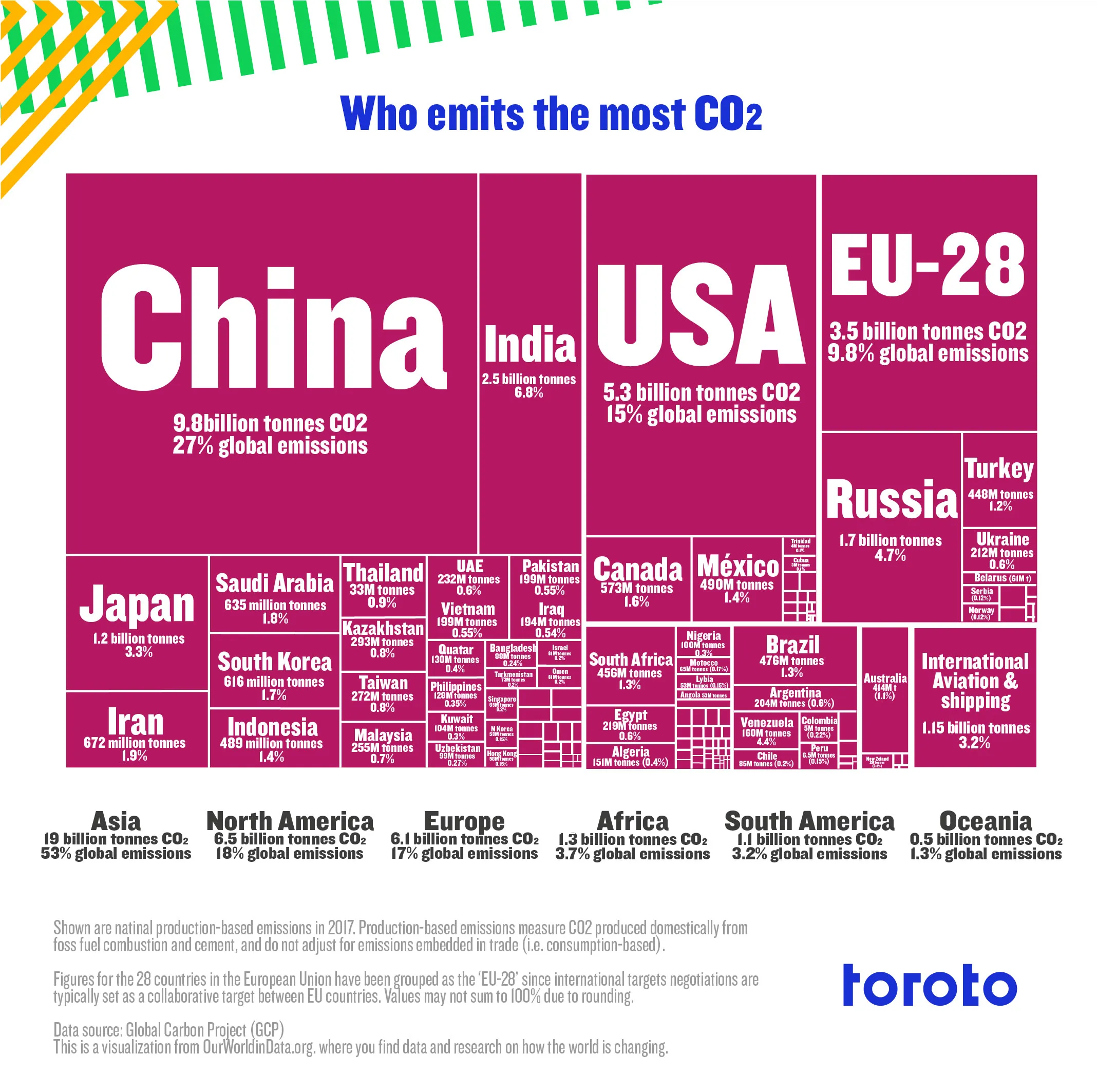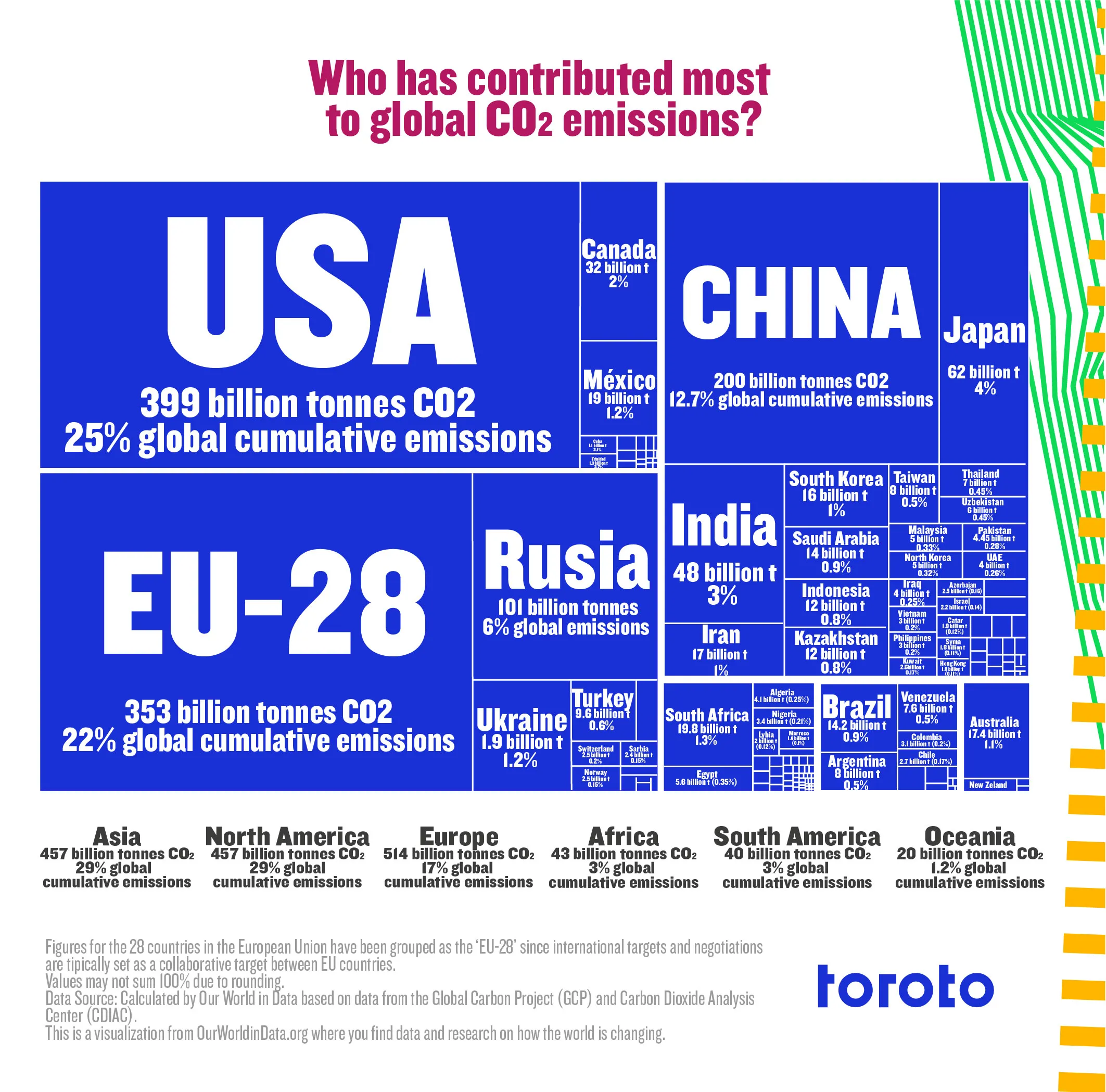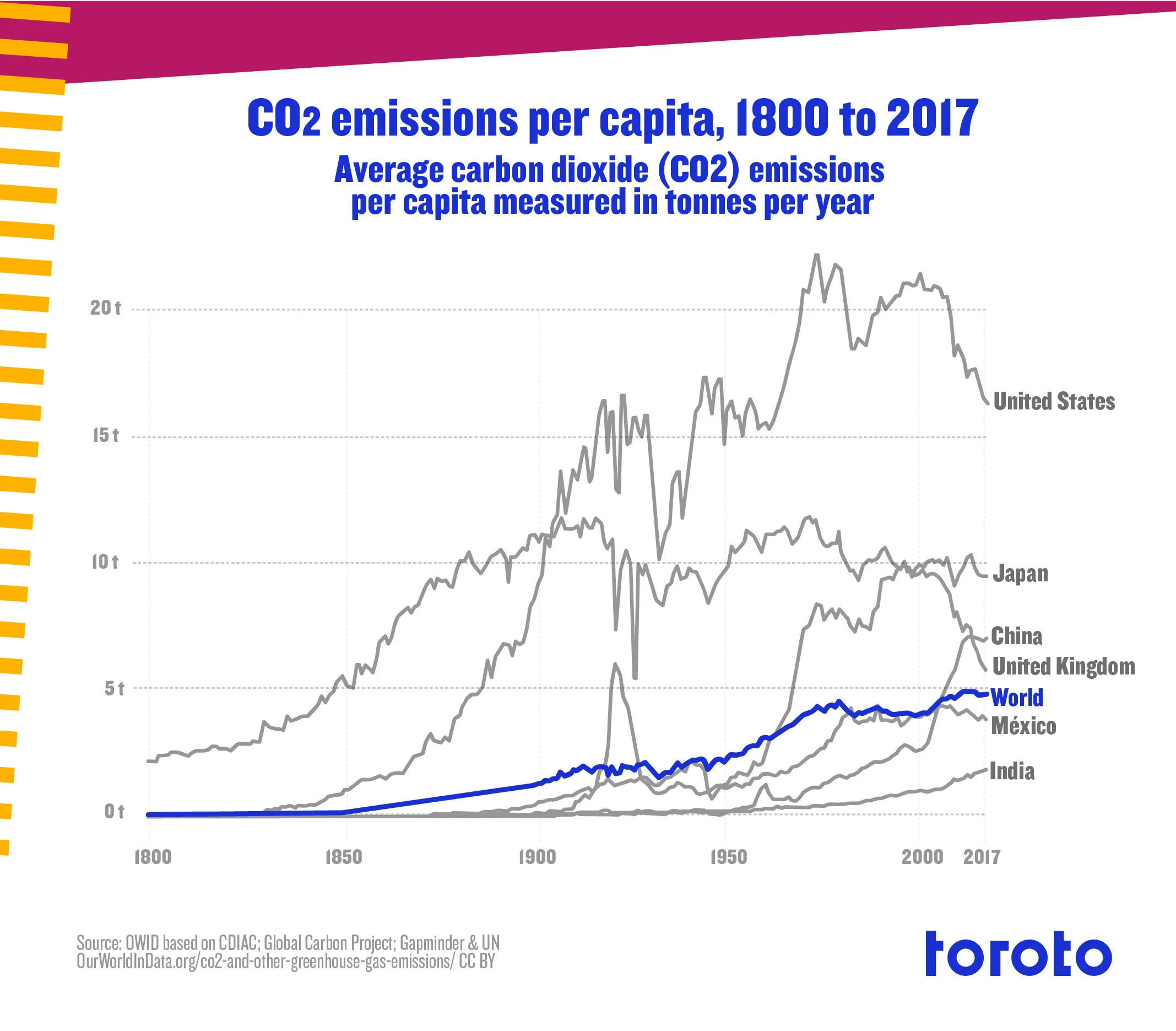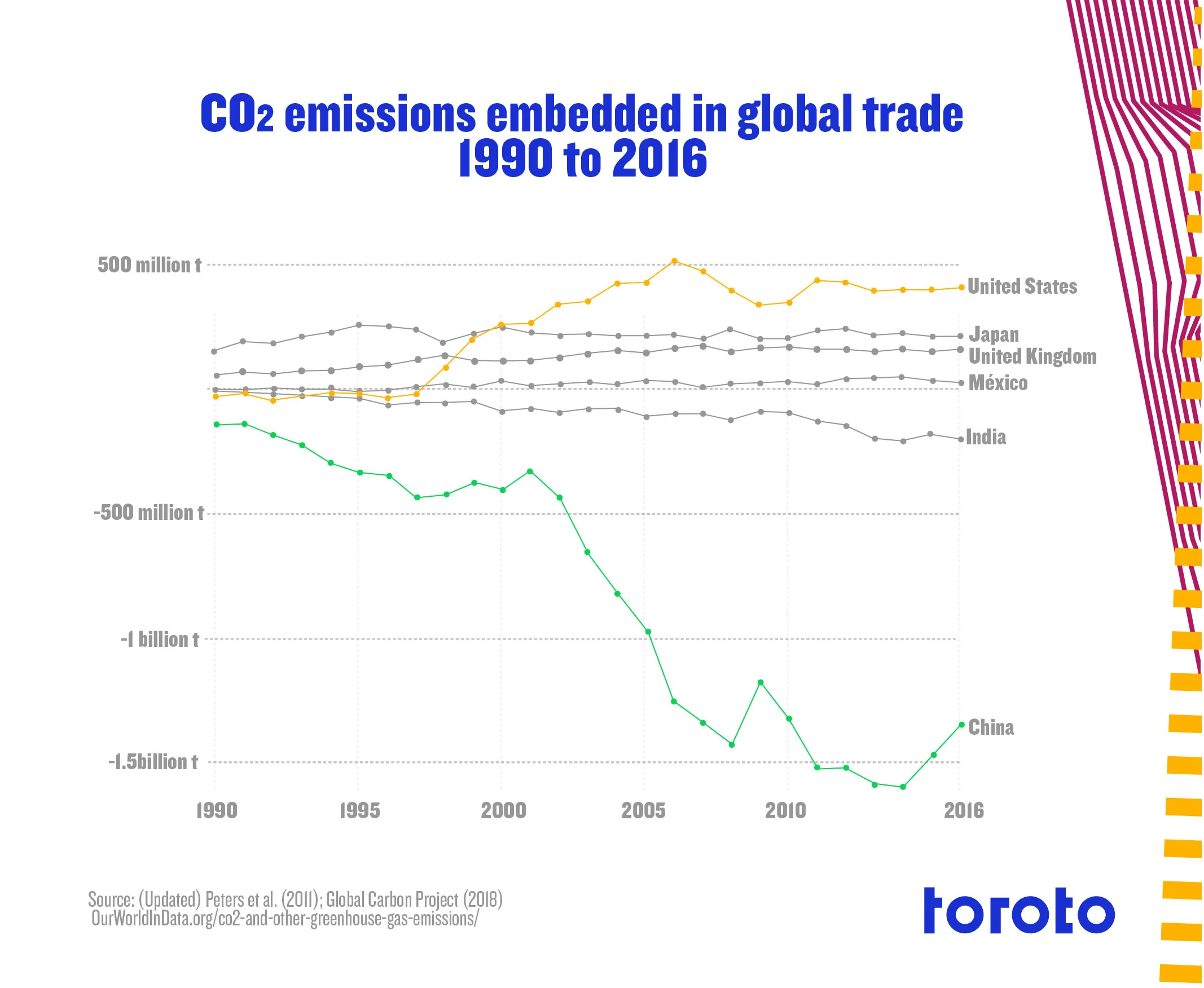Who is responsible for the climate crisis?



One of the most typical questions in climate diplomacy is: how did we get here and who is responsible?
The climate crisis is mainly caused by the emission of greenhouse gases (GEF). The most common GEF is carbon dioxide (CO2). CO2 is produced when we burn things. The reason is simple: things that burn usually have carbon (C), and to burn, they need oxygen (O2). C + O2 = CO2. Simple.
Today, China is by far the country that emits the most CO2: it is responsible for 27% of daily global emissions. Other heavyweights include the United States, the European Union and Russia. Look at this in the graphic:

An interesting fact is that since international aviation does not belong to any country, it counts as its own jurisdiction up to the bottom right of the graph. If it were a country, it would have twice the emissions of Canada.
So, according to the graphic above, China is responsible for the climate crisis, right? False. If we showed it to a Chinese person, it would suggest that we see two more things:
1. Historical issues. China has been polluting for much less time than the European Union or the United States.
2. Emissions per capita. China may be responsible for an enormous amount of emissions, but it also has an enormous number of people: 40 times the population of Canada.
Let's look at the following graphic!

As we can see, the picture is very different. The US and the European Union are collectively responsible for almost half of all historical CO2 emissions. Developing countries such as India and China use this argument when pressured to reduce their emissions.
There's a valid point: Western economies weren't constrained by climate change when they developed, and it's unfair that Eastern economies are held to higher standards.
Now let's look at per capita emissions:

The graphic above is just what India and China want you to see. Because their populations are so large, their emissions per person are not as high compared to those of countries such as Japan or the United States. The world has an average of 5 tons of CO2 per person per year. The United States triples that number.
Quick summary:
- China is the country with the largest carbon footprint today
- The United States and the European Union have emitted more CO2 in history
- Per capita emissions are important
So, are the US and the European Union responsible for the current climate crisis? Neither. Not exactly.
Most environmentalists would stop the analysis here, and would blame rich countries for the problem we face. I'm not going to defend rich countries; it's true that they've done a poor job being basically decent, but blaming them for climate change is short-sighted and doesn't get us anywhere.
Let's go further.
Where are the things of the world made? The things of the world are made in China, and everything that is made in a factory has a carbon footprint. So, when there are straws that are manufactured in China but are sold in Mexico, who is responsible for that amount of CO2? China, or Mexico?
It could be China, because they produced it, or Mexico because they bought it. This brings us to a terrible headache: should countries be responsible for the emissions they produce, or for the emissions they buy?
If we take into account imported versus exported emissions, we have the following data:

As we can see, China mainly exports CO2 emissions that accompany the products they sell around the world, while the US imports CO2 through the purchase of all the products they use.
We have been looking at information from a national perspective, comparing countries to countries, and although it has been interesting and we have learned a lot, we are no closer to knowing who is responsible for the current crisis.
The reason why country-by-country information doesn't work for us is because all countries in the world share a serious problem: inequality.
Income differences within a country are often enormous. So, a person in the Mexican countryside can have a carbon footprint of 2 tons of CO2 per year, while someone in one of the best neighborhoods in Mexico City can have a carbon footprint of 20 tons of CO2 per year. Ten more times.
The same is true in China, the US, the European Union or any other country. What happens if we see CO2 emissions separated by socioeconomic class? Finally, answers:

What we see is that the higher the income, the greater the carbon footprint. This happens all over the world, and it actually makes a lot of sense. The reason is simple: it's impossible to spend money without polluting, and it's very difficult to pollute without spending money. Logic tells us that the more money we spend, the greater our carbon footprint.
And yes, a high-income person in Mexico has more or less the same carbon footprint as a high-income person in London, New York or Paris, while a person from the Mexican countryside has a similar carbon footprint to someone from the French countryside.
When we buy something that was made using natural resources, we pay for those resources plus the labor associated with building what we're buying, but we're not paying for environmental degradation. The more things we buy, the more environmental degradation is added to our shopping cart.
To answer the original question in the article: that's us. We are responsible for our environmental problems. Not rural people, not those who work in factories.
And since we are responsible for our environmental problems, we should do more to try to solve them.
Explore reflections, research and field learning from our work in ecosystem restoration.